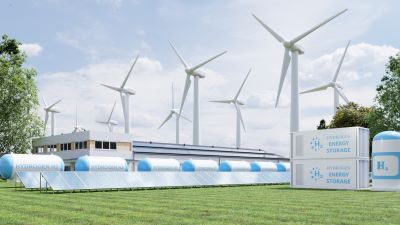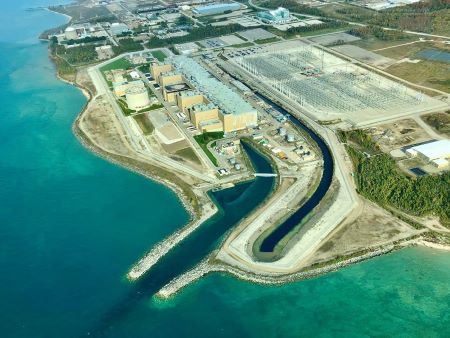Canada needs national industrial strategy for energy transition and new geopolitical order
 Canada needs a coordinated national industrial strategy to move beyond the “old geopolitical order based on oil” to a new geopolitical order driven by the global energy transition, according to a new report.
Canada needs a coordinated national industrial strategy to move beyond the “old geopolitical order based on oil” to a new geopolitical order driven by the global energy transition, according to a new report.
Unless Canada makes a significant and rapid shift to producing clean energy and processing raw materials into advanced chemicals and materials, the country could suffer a massive decline in prosperity, says the report by the Centre for Net-Zero Industrial Policy.
“As a small, open economy, Canada’s basis of power and prosperity – currently dominated by its role as a major fossil fuel producer – is under threat. Canada faces considerable risks to its exports, balance of payments and growth prospects,” the report says.
The report notes that recent analysis published by the International Monetary Fund (IMF) estimates that Canada’s trade balance could decline by two to three per cent of GDP up to 2050, as fossil fuel exports decline.
 “They [the IMF] see possibilities for Canada’s [overall] GDP to be 10 per cent lower by 2050 than it otherwise would be. That’s a huge number,” report co-author Derek Eaton (photo at right), director of future economy at the Transition Accelerator, told Research Money.
“They [the IMF] see possibilities for Canada’s [overall] GDP to be 10 per cent lower by 2050 than it otherwise would be. That’s a huge number,” report co-author Derek Eaton (photo at right), director of future economy at the Transition Accelerator, told Research Money.
“The fact that we are a small, open-economy nation means that the downside risks are massive – massive with capital letters,” he said.
Canada has the raw natural resources, scientific expertise and skilled workforce to be a leader in the energy transition and compete in the new geopolitical order, the report says.
“But beyond these resources, we need a concerted effort to build the advanced capabilities – the ‘brains’ – in our resources sectors, in the mining, forestry and agricultural sectors, so we can ensure that we have a strong position in this new global order,” Eaton said.
A new competitive dynamic between China, the U.S. and the European Union is fuelling investment in renewable energy, batteries for electric vehicles and other applications, critical minerals and hydrogen, according to the report.
These countries are seeking to achieve three goals: decarbonization, security, and economic development, the report says. “Industrial policy offers a way to achieve all three at once.”
“The countries that matter in this new world will build clean power and manufacturing capabilities on top of strong endowments of water, wind, sun, critical minerals and knowledge,” the report says.
However, development of Canada’s resource sector for net-zero supply chains has been slow, the report notes. The country’s net-zero industrial policy is focused on the battery supply chain, with enormous government investments in battery manufacturing plants in Ontario and Quebec being built by foreign multinationals.
“The task now is to build horizontally into other sectors and vertically into the upstream supply chain,” the report says.
“Our economic interest is not to focus this [net-zero supply chain] solely on extraction of resources and exporting,” Eaton said.
“It’s the mid-stream of these supply chains that really matters – where the minerals are transformed into materials for battery-active materials, or wood fibres are combined into mass timber products.”
Accelerate, an alliance of EV manufacturers, parts suppliers, miners and others called in a recent report to leverage the public and private investments made in battery manufacturing plants, “by developing a concrete and measurable plan to connect Canada’s upstream mining and materials sectors to our battery sector and our downstream parts and assembly sectors.”
Eaton said the new global order requires Canada activating its resource sectors by combining the country’s expertise in resource development with knowledge, technologies and innovation hubs to produce value-added critical mineral products, hydrogen for fuel and power, and bioeconomy products.
The Centre for Net-Zero Industrial Policy report was co-authored by Eaton, Bentley Allan, transition pathway principal at the Transition Accelerator, and Jonas Goldman, senior research associate at Johns Hopkins University.
The Centre is an initiative within the Transition Accelerator, a pan-Canadian organization that works with others to identify and advance pathways to a net-zero, prosperous and competitive Canada in 2050.
Canada’s position in the “largest transformation of industry” ever seen
“The energy transition represents the largest transformation of industry that has yet been envisaged. It’s going to affect the whole economy and the whole country,” Eaton said. The transition will increase demand for value-added products, such as clean energy and advanced materials, by Canada’s trading partners, he added.
In the new geopolitical order, countries like Morocco are emerging as hubs for Chinese investment, the report says. Chinese companies have invested US$20 billion in Morocco’s clean energy and battery manufacturing capability because of its proximity to markets and its favorable status as a U.S. Free Trade Agreement country.
Morocco is one of several countries including Australia, Indonesia, and Vietnam that are poised to be “middle powers” in the new order, according to the report. “If Canada is to matter and retain its position as a middle power, it must play a role as a source of critical resources and capabilities for the energy transition.”
According to the report, Canada has a strong position in all seven indicators crucial to the new energy order: solar, wind, hydrogen, critical minerals, biocapacity, natural gas and oil. However, the report says Canada needs to:
- identify where Canada’s comparative advantage in the new world lies by following the smart money with government support.
- cultivate advanced production and innovation capabilities – the “brains – in the processing of materials for net-zero supply chains.
- align procurement, diplomacy, trade and public policy across government ministries and programs to support national asset development.
Most importantly, Canada needs a simple, powerful process to identify and leverage national strengths, the report says.
“The process requires federal leadership, but also partnership with provinces, territories, industry, Indigenous communities and other stakeholders,” Eaton said.
Canada’s industry-led Economic Strategy Tables were an excellent partnership approach, particularly for identifying priority areas in which to focus efforts, he said. However, this consultative partnership process hasn’t been carried forward.
“What we really need are more granular, deliberate roundtables between government and industry and others to elaborate and implement goal-oriented strategies,” Eaton said. The key thing is to have information flowing, particularly between government and industry, he said.
There is a key role for independent intermediaries that support the process of information exchange, prioritization and decision making, which is essentially about joint investments, Eaton said. “This is about public money, together with private money and initiatives.”
Other countries, in Europe and East Asia and within the U.S. Department of Energy, have a model for identifying, prioritizing and investing in national industrial strengths, he said. “The point of the national strategy is having a higher-level coordinating partnership between government and industry and the other stakeholders.”
Canada is lacking a focused, coordinated, national partnership that also leverages and brings in other crucial players like investment banks, such as the European Investment Bank in Europe and its counterparts in other countries, Eaton said.
“We’re looking for a robust process that will maximize the likelihood of choosing some winners and backing some winners in the right way, and reduce the losers,” he said.
Prioritizing and investing in Canada’s industrial strengths is vital
According to the report, a national industrial strategy with a process to identify, prioritize and invest in Canada’s industrial strengths would involve:
- taking stock of national resource potential in the seven areas critical to the new energy order, and identifying where global supply will be constrained.
- comparing Canada’s 2050 potential to current projects, investment trends and policy directions.
- creating a strategy to maximize the benefit and advantages of national resource development for Canadians. For example, the forestry industry has proposed a national bioeconomy strategy that would identify best uses of wood fibre within a plan to create manufacturing value-added products across forest supply chains.
- identifying and developing knowledge-based capabilities in these new sectors. Canada needs to bring together its resource economy with innovative technology (including intellectual property) in dynamic, export-oriented clusters. “The challenge is to ensure that as much of the innovative stages of these supply chains take root and flourish, enhancing both value-add and strategic autonomy.”
- aligning procurement, diplomacy, trade and public policy in a multi-level collaboration that brings together Indigenous communities, provincial governments and federal agencies.
Eaton said there have been positive steps taken by federal and provincial governments, and some progress on various sectoral strategies and initiatives.
“But when you look at how important this is, macroeconomically, we need to elevate this conversation,” he said. “It should be more front and centre as we think about, collectively, our future economic prosperity.”
The timing for a steep decline in global oil demand and oil becoming a “downside liability,” for example, remains uncertain. But there are increasing signs of turning points, or tipping points, in the energy transition, Eaton said.
Sales of electric vehicles have recently slowed, but it’s only the growth in the EV sector that has slowed, not a decline in this new sector itself, he noted. China, for example, is now busily manufacturing and shipping its low-cost EVs to different parts of the world.
The energy transition-driven new geopolitical order is all about risk and uncertainty, and about where to invest, Eaton said. “Any good investment strategy takes a balanced approach.”
However, he added that Canada also needs to act faster and more strategically, because building and developing new industrial capabilities takes time. “If we’re to hedge our bets and balance our portfolio, we need to get working now.”
Any future economic dislocation for Canada due the energy transition will be accompanied by social dislocation and social pain, he said.
“It’s clear a new geopolitical order is emerging,” Eaton said. “If we want to have a strong voice at the table in shaping how it develops and participating in it, particularly with like-minded and allied countries, we need to move quickly and proactively.”
R$
Events For Leaders in
Science, Tech, Innovation, and Policy
Discuss and learn from those in the know at our virtual and in-person events.
See Upcoming Events
You have 0 free articles remaining.
Don't miss out - start your free trial today.
Start your FREE trial Already a member? Log in
By using this website, you agree to our use of cookies. We use cookies to provide you with a great experience and to help our website run effectively in accordance with our Privacy Policy and Terms of Service.



.png)
.png)